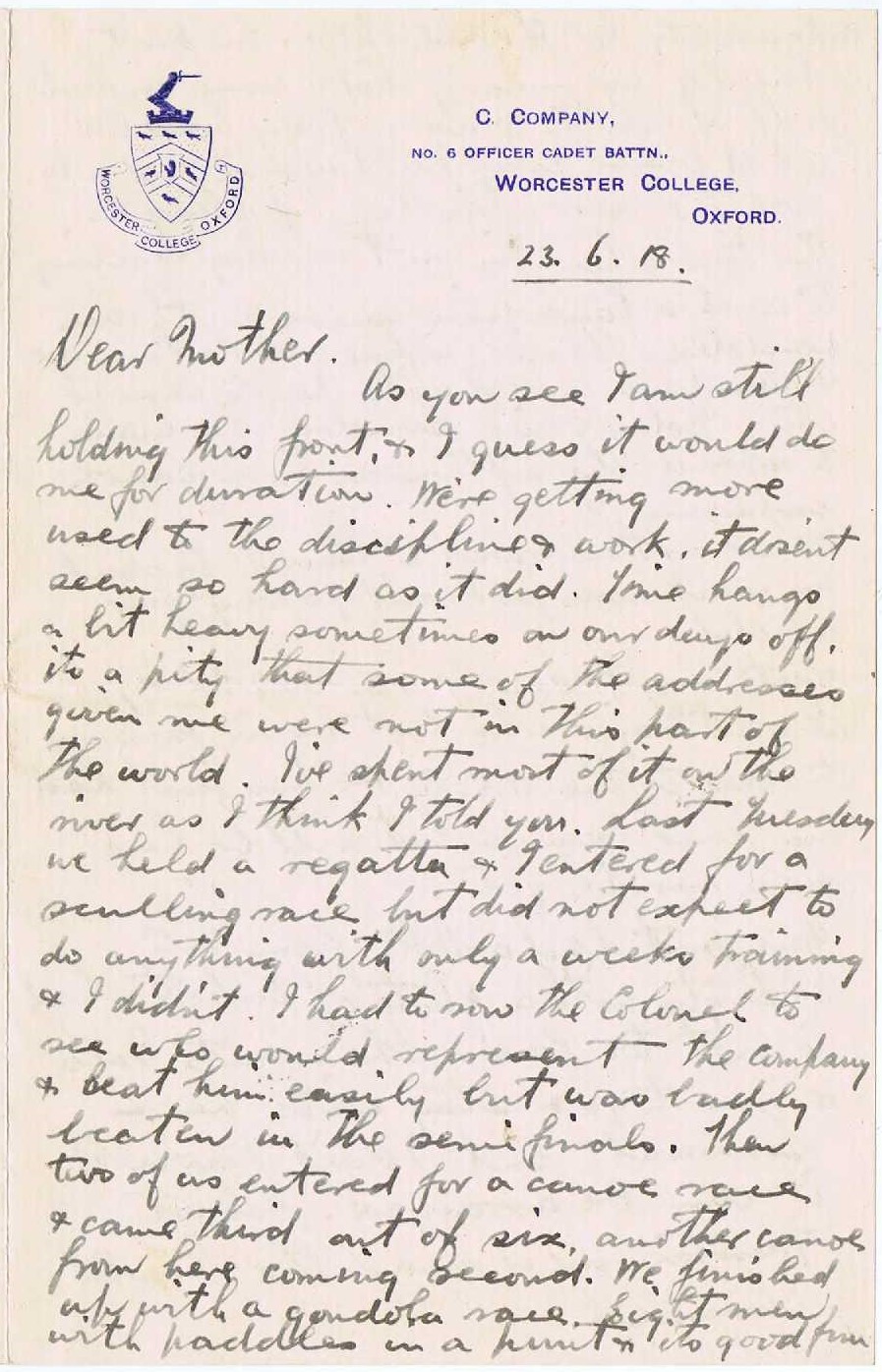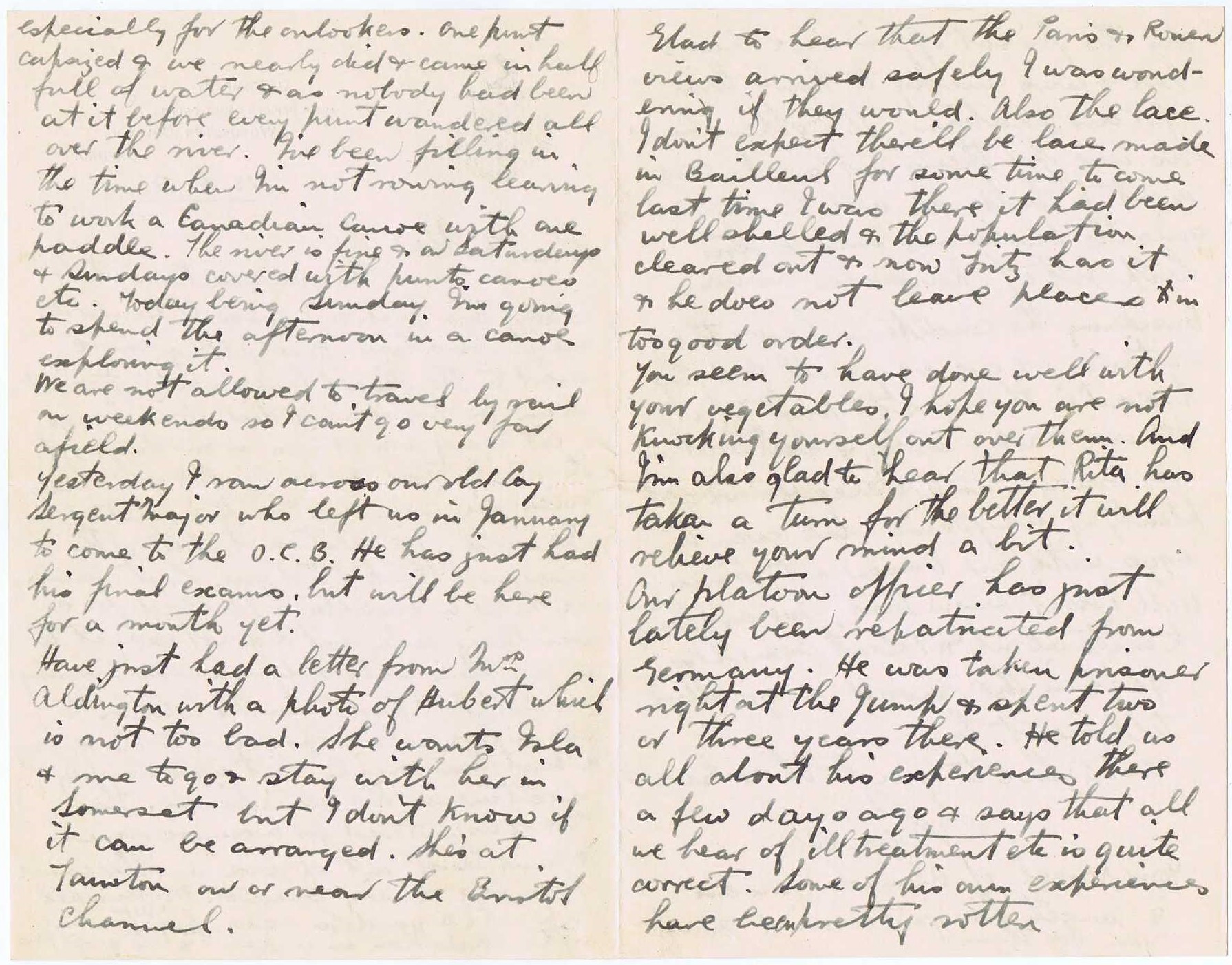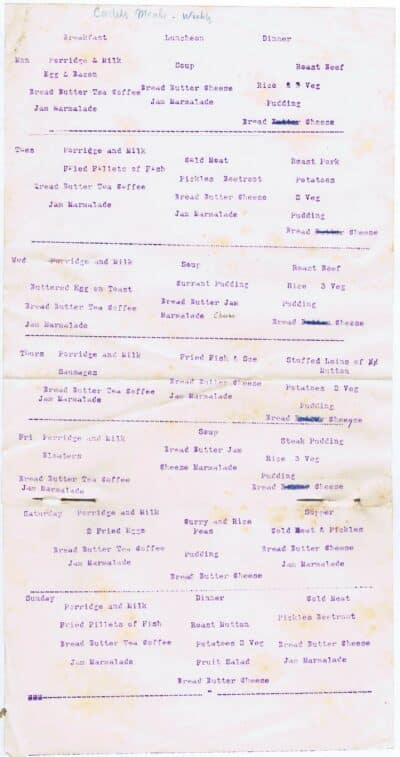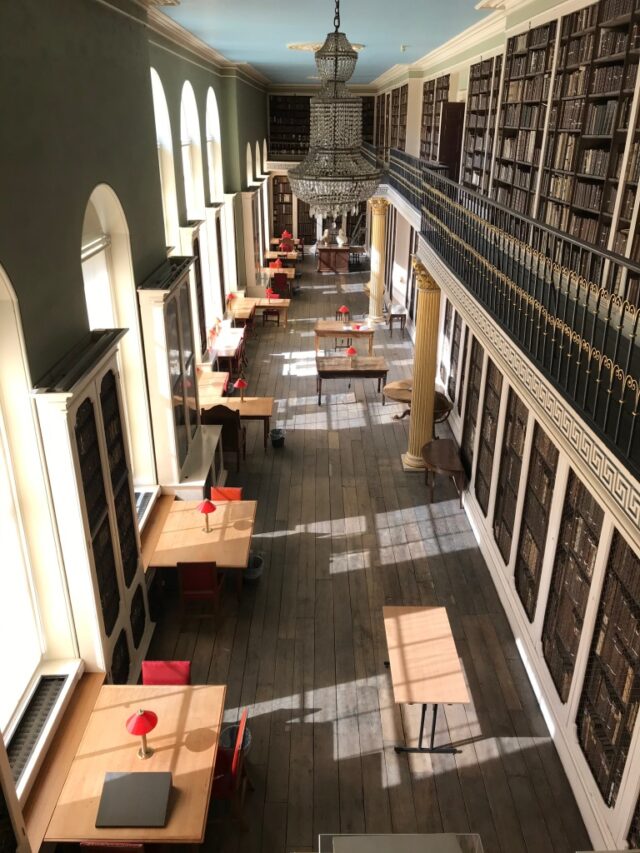Worcester College and the First World War

29th November 2017
Worcester College and the First World War
Letter from an Australian Cadet, 23 June 1918 (PDR 21/1)
Britain declared war on Germany on 4 August 1914, during the University’s Long Vacation. Many College members immediately joined the armed forces and did not return for Michaelmas Term, while others joined up in the following months. Worcester gradually emptied of undergraduate members; by December 1914 nearly half of the rooms available to undergraduates were empty, a fact that was unusual enough to be noted in the Room Rent book by the Bursar as the College had operated at maximum occupancy during the previous year.

Annotation by the Bursar in the Room Rent book, Christmas quarter 1914
To aid the war effort, this empty space in the College was used first as quarters for an Officer Training School, and then for C. Company of the Officers’ Cadet Battalion. These men were trained by the army and were not matriculated members of the University or members of the College, and we therefore have very little information in the College Archives about the individuals who were quartered here.

Cadets on the steps of the Main Quad
A recent addition to the Archives, a letter from an Australian cadet billeted at Worcester College to his mother, goes a small way towards filling that gap. The letter is on headed notepaper with the College coat of arms and address (the envelope was also emblazoned with the same arms) and gives some details of life in the College during the First World War.

Letterhead of C. Company, No. 6 Officer Cadet Battalion, Worcester College
The letter writer, Lionel de Souligny Stapleton Kingsborough, was born in Kent Town, a suburb of Adelaide, South Australia, on 3 October 1888. He joined the Australian Imperial Force on 28 March 1916 and embarked for service overseas in September that year, arriving in Plymouth on 14 November. He was sent to France with the 5th Pioneer Battalion in February 1917 and, according to his medical records, was “slightly gassed” in May 1917.
On 7 June 1918 Lionel Kingsborough joined No 6. Officer Cadet Battalion in Oxford having qualified for a commission, and was billeted at Worcester College. It must have seemed like another world after his experiences on the Western Front, and he opens the letter hoping that he will see out the war in Oxford, before going on to describe some of the fun they have been having:
Dear Mother
As you see I am still holding this front, and I guess it would do me for duration. We’re getting more used to the discipline and work, it doesn’t seem so hard as it did. Time hangs a bit heavy sometimes on our days off…I’ve spent most of it on the river as I think I told you. Last Tuesday we held a regatta and I entered for a sculling race but did not expect to do anything with only a week’s training and I didn’t. I had to row the Colonel to see who would represent the company and beat him easily but was badly beaten in the semifinals. Then two of us entered for a canoe race and came third out of six, another canoe from here coming second. We finished up with a gondola race. Eight men with paddles in a punt and it’s good fun especially for the onlookers. One punt capsized and we nearly did and came in half full of water and as nobody had been at it before every punt wandered all over the river.
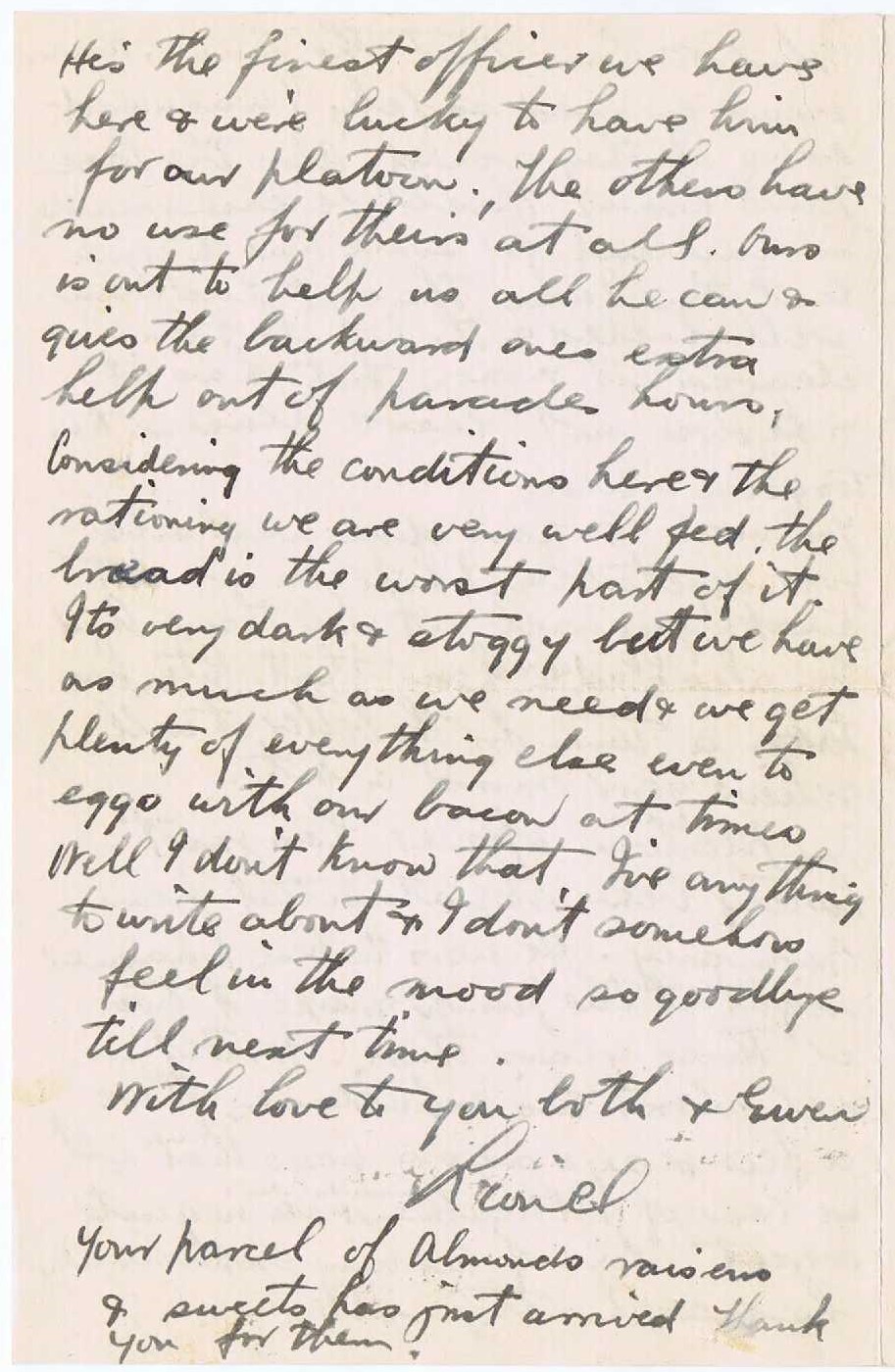
Letter from Lionel Kingsborough to his mother, 23 June 1918
Slightly disappointingly, Lionel Kingsborough does not describe the College or give his opinion on his accommodation, but he does have praise for the food, with the exception of the bread:
Considering the conditions here and the rationing we are very well fed. The bread is the worst part of it. It’s very dark and stoggy [sic] but we have as much as we need and we get plenty of everything else even to eggs with our bacon at times.
This would have been satisfying to the Bursar, F. J. Lys, whose correspondence file relating to cadets is full of letters and calculations about food and rations. For a daily fee of between 4s. 9d. and 5s. 3d. per cadet the College was required to meet all outgoings including food and lodging, fuel and light, baths, rates, taxes and insurance. In June 1918 there were 150 cadets in College, including Lionel Kingsborough, making work for the Bursar, the regular college servants, and five additional servants hired to work as scouts on their staircases. In contrast, there were fewer than a dozen undergraduates in residence.
- Sample menu for cadets, c1917
- List of cadets in College, including L. Kingsborough, June 1918
One area in which the files in the Archives are detailed is the damage to College property by cadets; it was necessary to document it fully in order to be able to claim the costs back. The files therefore reveal that the cadets hung flags on the gateway above the entrance to the College on armistice day, 11 November 1918, because they damaged a rosette in the ironwork. Half of the rosette was taken by a cadet as a memento despite Lys’ efforts to have it returned, although he did consider that the College was “very lucky at a time of so much excitement not to have had any more damage done”. The elaborate Victorian railings at the front of the College were in fact removed by Provost Lys in 1938 to restore the eighteenth-century facade to “its original proportions”. The current gate and railings were installed in 1950.

Worcester College from Beaumont Street, showing the former railings, c1908
Lionel Kingsborough was not at Worcester for the armistice celebrations that damaged the railings. In October 1918 he contracted influenza and was sent to the No 1 Australian Auxiliary Hospital, Harefield Park, Middlesex, where he remained until after the armistice. He returned to Australia in February 1919 and was invalided out of the army in March, his illness deemed to have been aggravated by military service. He married in 1927 and had one son, Michael.
The College did not immediately empty of cadets following the armistice. The majority of those billeted in College in 1918 were from Australia, New Zealand, and British colonies, and their numbers necessarily decreased slowly. In January 1919, there were still 53 cadets and 3 officers resident, although the number of undergraduates returning after demobilisation was increasing. However, when asked in February 1919 if he could take more members of the armed forces, Lys was forced to write to the commanding officer that “I think we must now devote ourselves and our resources to our Undergraduates”. Although many of the men returning from military service were older than usual for undergraduates, by 1920 the College had, on the whole, resumed life as it was before the war.
Emma Goodrum, Archivist
Bibliography
- Jessica Goodman, ‘Worcester at War’ in Jonathan Bate and Jessica Goodman (eds.), Worcester: Portrait of an Oxford College (London, 2014)
- First Australian Imperial Force Personnel Dossier for Lionel de Souligny Stapleton Kingsborough, accessed via Ancestry.com Australia, WWI Service Records, 1914-1920 [database online]. The original is in the National Archives of Australia
- Ancestry.com Australia, Birth Index, 1788-1922 [database online] compiled from publicly available sources
- Ancestry.com Australia, Marriage Index, 1788-1950 [database online] compiled from publicly available sources









